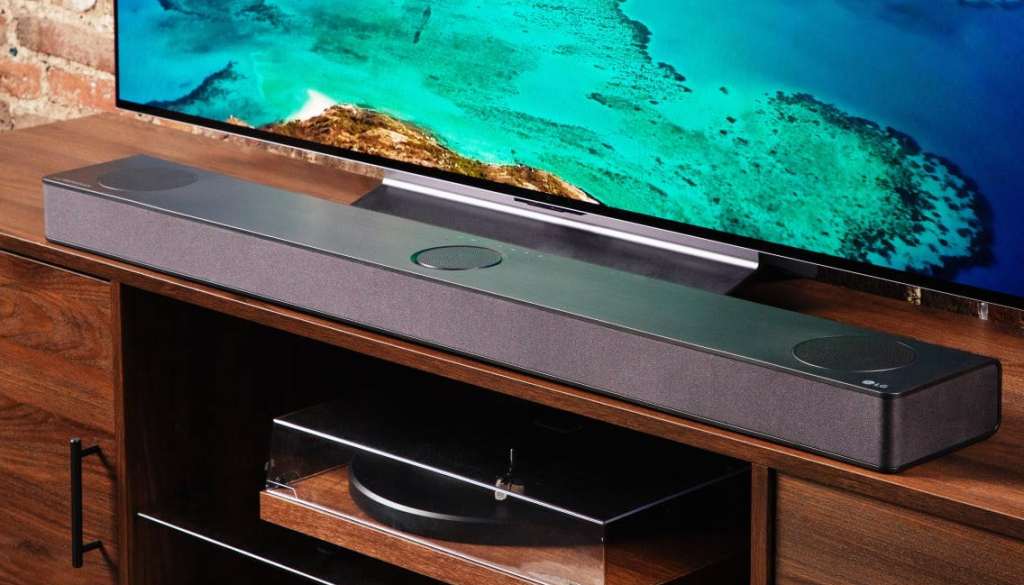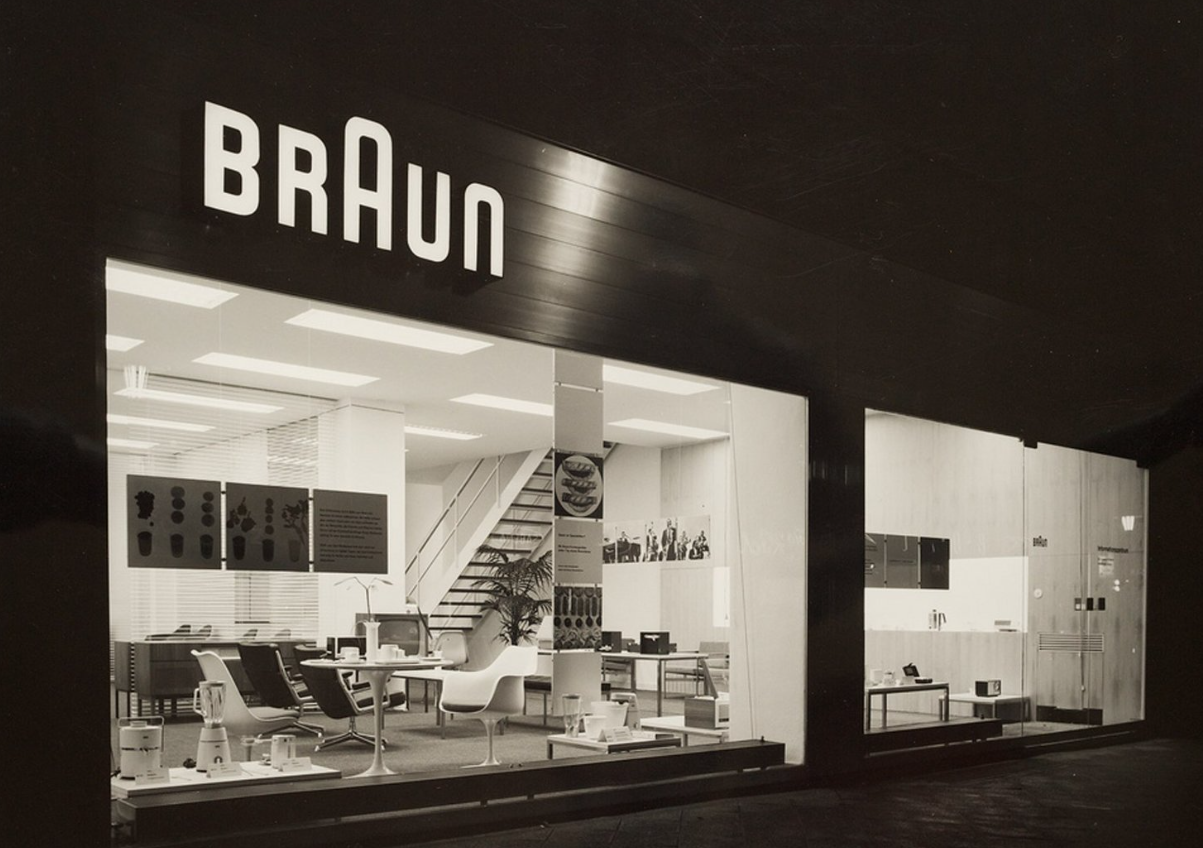Soundbars have become an indispensable part of the modern audio system, especially as manufacturers strive to make TVs ever thinner and in-built speakers ever less powerful. If you want to turn your living room into a real cinema, a soundbar is the perfect solution. However, choosing the right device can be a challenge. So how to choose a soundbar for your TV, what criteria to consider, and what to look out for when buying models from brands such as LG and Samsung.
Why you need a soundbar: basic purpose and benefits
Before you start choosing a particular model, it’s important to understand why you need a soundbar and what benefits it can provide. Modern TVs have high picture quality, but their built-in speakers are often unable to deliver the depth and volume of sound you need. This is due to the limitations of the size and shape of the speakers in ultra-thin enclosures.
Benefits of a soundbar:
- Improved sound quality: Soundbars are capable of reproducing sound with greater detail and depth, making watching films and TV series more immersive.
- Compact: Unlike traditional home theatres, the soundbar has a small footprint and can be installed directly in front of or underneath the TV.
- Easy connectivity: Modern soundbars offer a variety of connectivity options, from wired via HDMI to wireless via Bluetooth, making it easy to set up your system.
A soundbar not only enhances sound, but also makes it more spacious, creating an immersive experience. If you often watch films, shows or play video games, a quality soundbar can greatly enhance your enjoyment.
Basic criteria for choosing a soundbar
Choosing a soundbar for your TV is not just a matter of preference. It is important to consider many parameters that will determine how well the device will meet your requirements. Below are the key criteria to consider.
1. Sound power
Sound power is one of the main indicators of soundbar quality. It is measured in watts (W) and determines how loud and rich the sound will be. The power should be selected according to the size of the room:
- For small rooms (up to 20 m²), a power of 100 to 150 W is sufficient.
- For medium-sized rooms (20 to 40 m²), models with 150 to 300 W are suitable.
- For larger spaces (over 40 m²), it is better to choose units with a power of more than 300 W.
2. Number of audio channels
Soundbars vary in the number of channels, which determine how the sound will be distributed. The simplest models offer a 2.0-channel system (two front speakers), but for more surround sound, you should consider models with 3.1, 5.1 or even 7.1 channels.
Example configurations:
- 2.0 – two front speakers, no subwoofer.
- 2.1 – two front speakers and one subwoofer.
- 5.1 – five speakers (two front, two rear and centre) plus a subwoofer.
- 7.1 – seven speakers and a subwoofer for more detailed surround sound.
For maximum immersion, consider soundbars that support Dolby Atmos or DTS technologies, which add height channels to create a three-dimensional soundfield.
3. Ways of connection
Modern soundbars offer several connection options that affect sound quality and usability. The most common ways are:
- HDMI: The best option for high quality audio transmission. HDMI ARC (Audio Return Channel) allows you to control the soundbar from your TV remote control.
- Optical cable: Provides high quality sound, but does not support some formats such as Dolby Atmos.
- Bluetooth: A convenient wireless connectivity solution. Suitable for streaming music from mobile devices, but may be slightly inferior in sound quality to wired versions.
When choosing a soundbar, make sure it supports the connectivity formats you need and is also compatible with your TV.
4. Support for sound formats
If you want to get the most out of your soundbar, make sure it supports all modern sound formats such as Dolby Digital, DTS, and especially Dolby Atmos. Supporting these formats will allow you to play back sound with cinematic quality, making watching films even more immersive.
Examples of choices: LG and Samsung
Before we get into specific recommendations, let’s look at how to choose a soundbar for your TV using two popular brands – LG and Samsung – as an example. These manufacturers offer a wide range of soundbars that perfectly complement their TVs. We’ll break down the main parameters and features to consider when choosing a soundbar for TVs from these brands to help you make the right choice.
How to choose a soundbar for your LG TV
LG TVs are known for their picture quality and extensive connectivity options. When choosing a soundbar for your LG TV, it is important to consider several factors, such as support for proprietary technologies and the design of the device.
Compatible with LG Sound Sync
Many LG soundbars support LG Sound Sync technology, which allows you to synchronise the sound from your TV and soundbar via Bluetooth or optical cable. This greatly simplifies setup and eliminates the need for additional wires. For full integration with your LG TV, we recommend choosing models that support this feature.
Recommended soundbar models for LG TVs:
- LG SL5Y– Compact model with DTS Virtual and 400W of power. Suitable for small to medium sized rooms.
- LG SN11RG – Premium soundbar with Dolby Atmos support, 770W of power and wireless rear speakers. Ideal for creating a home theatre experience.
Design and installation
LG TVs often have slim frames and elegant designs. When choosing a soundbar, pay attention to its appearance. The soundbar should harmonise with your TV not only in sound but also in design. Choose a model that matches your TV in width and style.
How to choose a soundbar for your Samsung TV set
Samsung offers a wide range of soundbars that fit perfectly with their TVs, providing high quality sound and ease of use. Let’s look at the main aspects of choosing a soundbar for your Samsung TV.
Support for Q-Symphony technology
One of the unique features of Samsung soundbars is Q-Symphony, a technology that allows you to use the speakers of your TV and soundbar simultaneously to create a richer sound field. This is especially relevant for those who want to maximise sound quality without having to purchase additional devices.
Recommended soundbar models for Samsung TVs:
- Samsung HW-Q800T– Model with Dolby Atmos and DTS support, 330W power and built-in subwoofer. Suitable for medium to large rooms.
- Samsung HW-Q950A – Premium model with 11.1.4-channel configuration, Q-Symphony support and 616 watts of power. Ideal for creating surround sound in the home.
Connection selection and configuration
Samsung soundbars support a variety of connection methods including HDMI, optical cable and Bluetooth. HDMI with ARC or eARC support allows you to easily control the soundbar via your TV remote, making it easy to set up and use.
How to match the soundbar to your TV: compatibility and design
Choosing the right soundbar is not only about technical parameters, but also about the appearance of the device. The design of the soundbar should harmonise with the TV and the interior of the room.
Compatibility in size and style
The soundbar should match the width of your TV or be slightly smaller. This will maintain visual balance and will not compromise the aesthetics of the room. In addition, many soundbar models can be wall-mounted, which is particularly useful for saving space.
Compatibility Table:
| TV width | Recommended width of the soundbar |
| Up to 40 inches | Up to 35 inches |
| 41-55 inches. | 36-45 inches. |
| Over 55 inches | 46 inches or more |
System expansion
If you plan to expand your sound system in the future, choose soundbars that support the addition of rear speakers or a subwoofer. This will improve sound quality and create a richer sound field.
How to choose the right soundbar: expert advice
To ensure that your choice of soundbar is as accurate and suited to your needs as possible, it’s important to follow a few simple but important guidelines.
1. Estimate the size of the room
The size of the room in which the soundbar will be installed plays a key role in the choice of device. For small rooms (up to 20 m²), compact models with basic functions are suitable, while for spacious living rooms (over 40 m²), it is better to choose soundbars with higher power and surround sound support, such as 5.1 or 7.1 channels.
2. Define your audio priorities
If you prefer to watch films with rich surround sound, it’s worth paying attention to models with Dolby Atmos and DTS support. These technologies create a three-dimensional sound space, which greatly enhances the listening experience. If your main content is TV shows and news, a basic model with a 2.1-channel configuration may be sufficient.
3. Consider the interior design
A soundbar should not only sound good, but also harmonise with your interior. Choose models that match the colour and style of your TV and furniture. Many soundbars can be mounted on a wall or shelf, which is especially convenient in modern interiors.
4. Check the connection possibilities
Make sure the soundbar you choose supports all the connection methods you need. HDMI ARC or eARC is the best option for high quality audio and controlling the device from the TV remote. If you plan to use the soundbar with multiple devices, pay attention to the number of inputs and outputs.
5. Think about future expansion of the system
If you want to expand your system in the future, choose soundbars that support the addition of rear speakers or a subwoofer. This will improve the surround sound experience and make it richer and more detailed.
Choosing a soundbar for your TV is an important decision that can greatly improve the quality of your home audio. Whether you’re choosing a soundbar for your LG or Samsung TV, it’s important to consider parameters such as power, number of channels, connectivity options and design. By following our recommendations, you’ll be able to find the perfect device that will give you a truly enjoyable experience when watching films and TV shows.
Let reBITme make your next TV soundbar purchase even more favourable. Enjoy your shopping!





